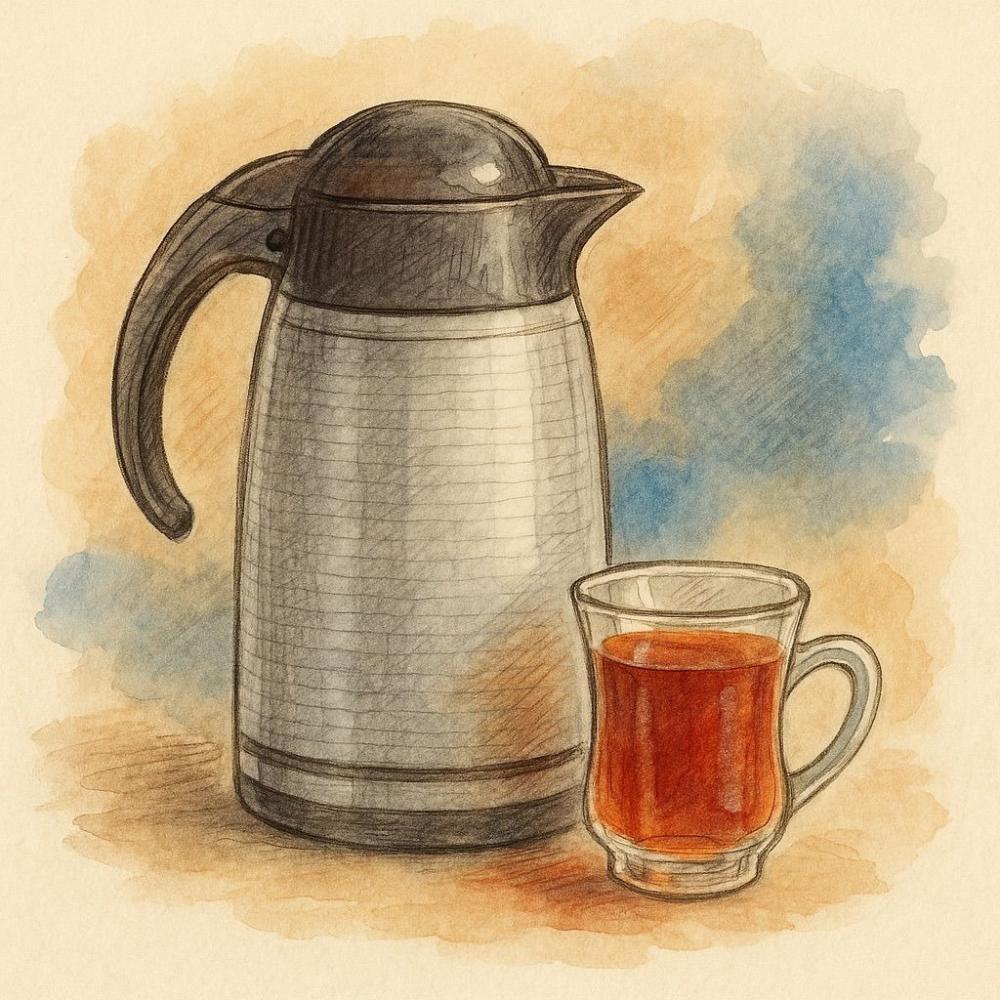
In Saudi Arabia, saying “let’s have tea” isn’t just about drinking something warm.
The phrase carries more than its surface meaning—it signals a moment of pause, a gesture of comfort, a quiet act of presence.
It might begin a conversation never spoken before, close a long day, or simply serve as a daily ritual too natural to question.
Tea here isn’t consumed for heat or caffeine, but for what it represents: gathering, taste, and a shared state of being.
It’s a quiet practice, like breathing—rarely mentioned, yet impossible to live without.
Tea in Saudi culture isn’t an imported habit.
It’s present in every home, in every occasion, and woven into every personal or social transition.
You’ll find it in solemn condolences and joyful celebrations, during serene morning hours or while welcoming a beloved guest.
More importantly, you’ll find it prepared the way people prefer it—not how it was dictated.
Saudis didn’t simply adopt tea; they reshaped it.
They infused it with their temperament, their customs, their rhythm… until tea became a reflection of Saudi identity itself.
In the Smallest Details, Rituals Take Shape
Tea in a Saudi home doesn’t start when leaves are placed in water.
It begins with the very thought of it—
when the host feels the room needs settling, or the conversation needs a companion, or the moment needs something extra.
Then, the kettle is washed, set on the stove, and the scent begins to rise—often before a single word is spoken.
From the outside, it might look simple.
But from within, it’s the deliberate crafting of a moment.
The quantity, the heat, the type of tea leaf, the timing of the pour—each element is guided not by written recipe, but by instinct.
And what results isn’t just “tea,” but variations with depth and meaning.
The traditional strong black tea—without additives—is the foundation of gatherings, a testament to trust in pure flavor.
It is brewed with patience, sometimes boiled more than once until its color deepens and its strength stabilizes, then poured into small cups in a quiet, rhythmic manner.
This kind of tea needs no embellishment.
Its elegance lies in its clarity.
And for that reason, it remains in memory—not just as a taste, but as a model of restraint and depth.
But the Saudi palate didn’t stop there.
It kept evolving, kept adding.
And from that evolution, the blends were born.

From Herbs to Emotions: The Memory Behind the Leaves
Herbs in Saudi tea aren’t decorative touches or flavor experiments.
They are emotional tools—used to shift moods, recall moments, or speak to guests in an unspoken language.
At home, herbs are rarely asked for—they’re simply there.
In an old kitchen drawer, a modern shelf beside a coffee machine, or a glass of water by the window—there you’ll find basil, mint, sage, rose petals, marjoram…
Each one with its own personality.
Each one used the way poetry is used:
according to the moment, the mood, the person sitting across.
Wild mint (habaq) is a breath of stillness.
When the atmosphere needs calming, or the gathering needs grounding, a few leaves in the teapot can settle everything.
Mint offers energy—it refreshes, uplifts, and makes a space feel alive.
Rose petals, subtle and soft, are added as a gesture of care—when tea needs to whisper, not speak.
Sage (maramia) is serious, grounding. It’s brewed when silence is preferred, when the need for balance is more than passing.
Marjoram (dosh), bold and distinctive, is called upon when tea becomes more than drink—a thoughtful experience.
These herbs aren’t measured with spoons, but with intuition.
They aren’t meant to overpower tea, but to deepen its meaning and give it tone and emotion.
Blends Without Names… But Always Present
For generations, these mixtures weren’t called “Saudi blends.”
But they existed—clearly and beautifully.
Each home had its way. Each hand had its own touch. Each moment had a tea made just for it.
In women’s gatherings, grandmothers blended herbs with the same grace they offered their prayers.
In kitchens, mothers brewed teas to suit the moment: guests arriving? a long evening ahead? quiet reflection?
But Saudi tea lives far beyond domestic spaces—it moves through every social landscape.
In men’s majlis, tea marks both the start and flow of conversations.
In rest houses, it’s brewed over coals and watched with care until it reaches the right note.
In desert outings, young men carry their kettles and debate whether basil should be added before or after boiling.
In beach trips and open-air camps, tea is served alongside laughter and wind—as much a part of the adventure as the road itself.
In modern cafés, tea has returned in stylish cups, but still holds the spirit it always carried.
Tea here doesn’t belong to one generation, or one setting.
It adapts to every scene, every hand that pours it—always with a Saudi signature.

Saudi Blends: Reviving Memory in a Language of Today
When Taolefah began presenting these blends, it wasn’t trying to invent something new.
It was simply listening—to the scents already stored in memory.
Rearranging what had always been there.
Giving form to a cultural taste that never disappeared—it simply needed to be seen again, in a way that respects the past but speaks the present.
Each blend today isn’t just a flavor.
It is a preserved emotional state.
Basil is a quiet moment.
Saffron is silent celebration.
Mint is renewal.
Sage is grounding.
Marjoram is reflection.
Rose is a delicate gesture of beauty and care.
These are not commercial recipes.
They are lived expressions of culture—blended with memory, and served with meaning.
They continue a tradition, but in a voice today’s generation can recognize and cherish.
Saudi Tea… As Told to the World
In a world of copy-paste flavors and mass-produced culture, Saudi Arabia offers something truly its own:
a tea culture rooted in presence, stillness, and personal depth.
It doesn’t chase luxury, but carries elegance.
It doesn’t seek to be different—it simply is.
Saudi blends aren’t just a sensory experience.
They are a mirror of this land’s spirit.
A spirit that knows how to shape taste, how to preserve tradition, and how to offer it with simplicity, sincerity, and finesse.
And if the world has tasted tea from China, India, and Morocco—
then surely, it is time for it to taste what Saudi Arabia has always known:
A tea to drink, to understand… and to feel.


